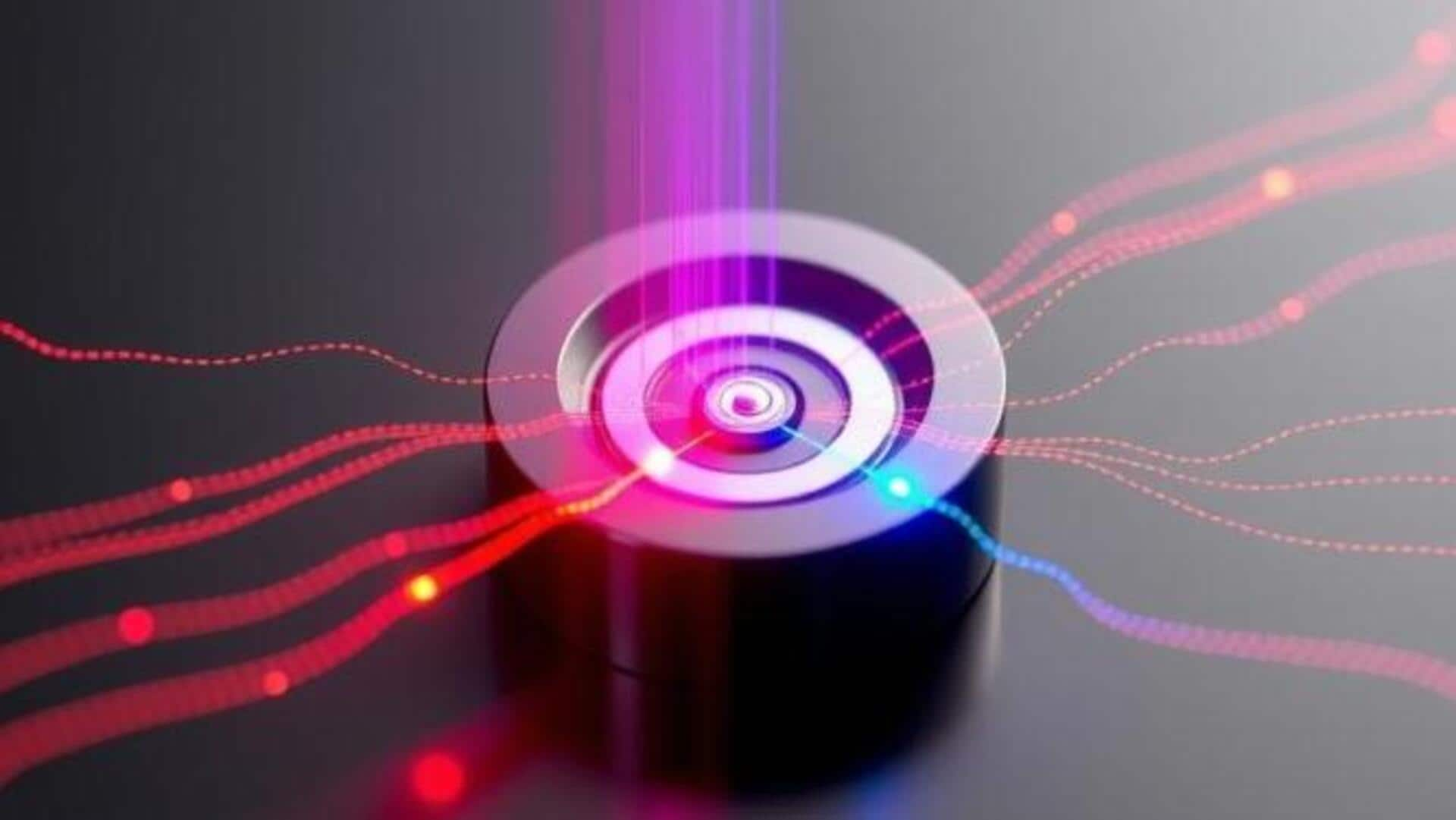
Beyond light, charge, sound: This material now controls quantum particles
What's the story
Chromium sulfide bromide (CrSBr) is an intriguing material for scientists as it can handle quantum information in ways never seen before.
CrSBr is the only known material that can encode information with light, electric charge, sound-like vibrations, and magnetism.
Now, a new study reveals CrSBr's strange magnetic properties enable effective trapping and control of excitons—electron-hole pairs created when an electron jumps from a semiconductor's 'ground' energy state to a higher energy state.
Magnetic switch
Temperature controls CrSBr's magnetic order
The study indicates that the magnetic order of CrSBr can be toggled on/off by changing its temperature. This change in magnetism influences how excitons behave in the material.
Rupert Huber, a physics professor at Germany's University of Regensburg and one of the study authors, said: "The magnetic order is a new tuning knob for shaping excitons and their interactions. This could be a game changer for future electronics and information technology."
Results
What did experiment reveal?
To study excitons' behavior inside CrSBr, the researchers conducted an experiment.
They employed ultra-short laser pulses lasting just 20 quadrillionths of a second (20x10^-15 seconds) to create excitons inside the material.
A second laser was then used to gently push the excitons into slightly higher energy states, splitting them into two distinct energy levels - a phenomenon known as fine structure.
Antiferromagnetic state
Temperature influences excitons' behavior in CrSBr
The study found that excitons behaved differently depending on which direction they moved in the material.
At very cold temperatures (below -222°F or 132K), CrSBr becomes magnetic, with tiny magnetic fields of the electrons lining up in opposite directions from one layer to the next.
This is called an antiferromagnetic state where excitons are found to be trapped inside a single layer, moving only in one direction.
Free movement
Excitons' behavior changes with temperature
At warmer temperatures (above 132K), CrSBr loses its magnetism, making electron spins point in random directions.
In this case, excitons aren't confined anymore. They spread out over multiple layers and move freely in all directions, displaying three-dimensional behavior.
This ability to trap or release excitons based on temperature (or magnetic fields) is like flipping a magnetic switch, unveiling a powerful way to control the flow of information in quantum devices.
Future prospects
Exploring excitons' potential in quantum information transfer
The study authors now hope to see if excitons can act as a bridge to transfer quantum information between different physical systems.
This could eventually lead to quantum machines or devices that use these four properties: photons to transfer information, electrons to process information through their interactions, magnetism to store information, and phonons (quanta of sound) to modulate and transduce information to new frequencies.
The study is published in the journal Nature Materials.